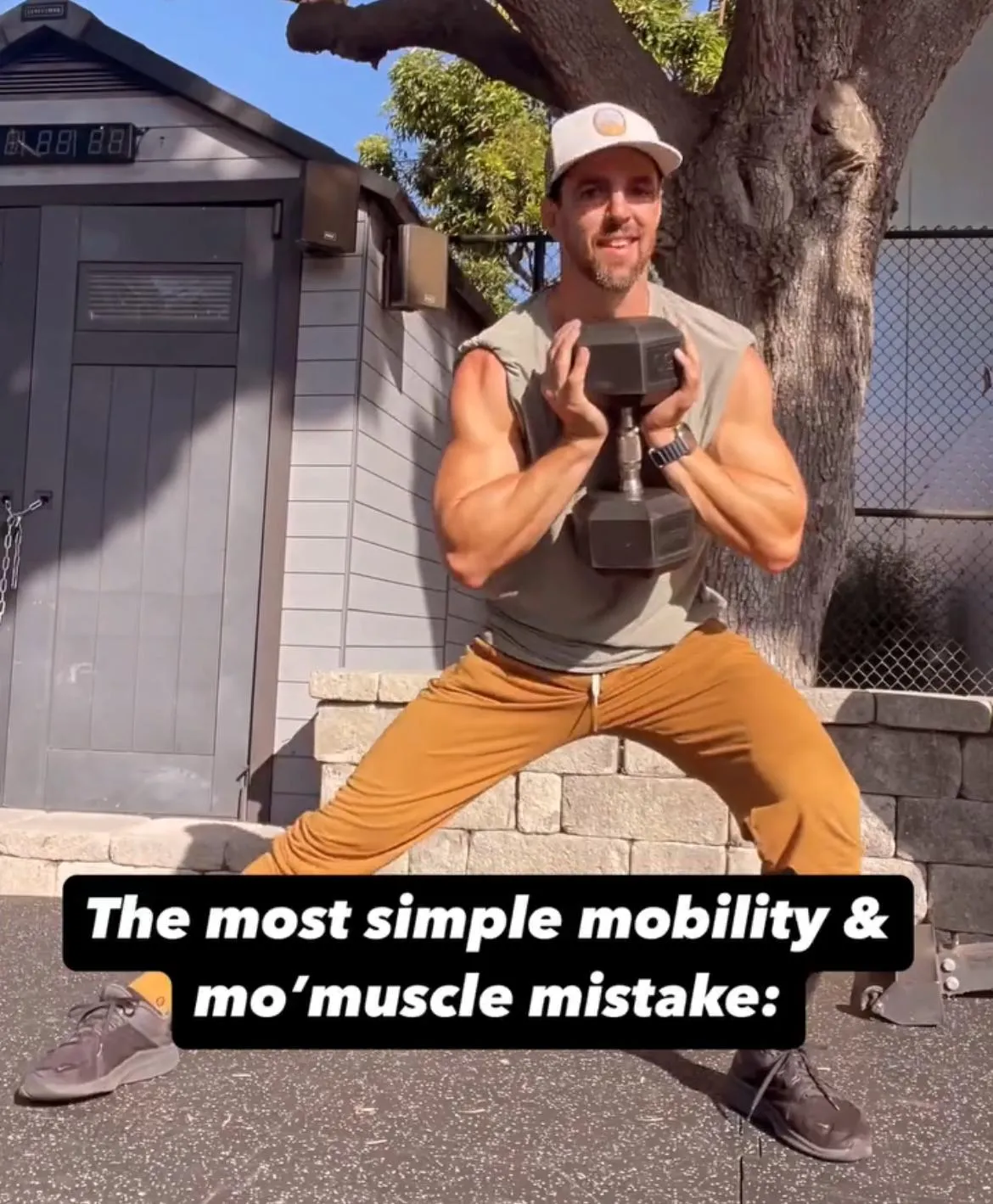The Latest: Inside Coach Tim Thackrey's Mind
with my latest tools to get you Back in the Game!
Articles, Resources, Tools, & Trainings
For Ex-Athletes, Martial Artists, & Busy Professionals

Mo'Bility & Mo'Muscle - 'Find the Stretch'
When most people think about improving their range of motion (ROM), they focus on flexibility training—static stretches or mobility drills. My beef isn't that they don't work - it's that it's a TON of volume to get little gainz. For most people, increasing volume isn't the best option to make progress. Add in the fact we can only adapt what we can recover from...the fine line between junk volume [a lot of reps with little to no effect] and being Jean-Claude Van Damme stuck between 2 folding chairs in the middle splits. Ok...I guess it's more like a canyon than a fine line.
Flexibility alone isn’t enough, especially if you want to build muscle, improve performance, and protect yourself from injury. To truly improve your mobility, strength, and gain lean muscle, you need to train your muscles in the lengthened position with appropriate resistance. This means using exercises that challenge both your muscles and your tendons, ligaments, and connective tissues at their end range, where they are the most mechanically disadvantaged. Aka - you gotta 'Find the Stretched Position'.
The Limited Effects of Traditional Flexibility Training
Traditional flexibility training focuses primarily on increasing your ROM without necessarily engaging muscles to contract. While this can improve flexibility, it does little for building strength in these ranges—especially critical for athletes or ex-athletes looking for power and resiliency in their movements. For martial artists, especially in combatives like Taekwondo, it's essential to have the ability to generate power at the end of their range of motion, such as in high kicks or deep stances. Flexibility training alone doesn’t build the strength needed to generate force in those positions.
Additionally, focusing solely on flexibility without resistance doesn’t challenge your tendons and ligaments, which are essential for joint stability and injury prevention. If you want a resilient body that can handle explosive movements and recover from wear and tear, you need to train these tissues as well. Without the added load of resistance, your ligaments and tendons won’t adapt as well to stress, leaving you more vulnerable to injury in the long term.
Resistance Training in the Lengthened Position
By using resistance training that incorporates a stretched position for the muscle contraction [aka, an effective rep!], you’re not only improving your range of motion but also engaging the muscles in a more efficient, functional way. Here’s how it works:
Increases Muscle Activation: Working muscles in a stretched position forces them to contract more intensely, helping to increase muscle mass and strength.
Improves Joint Resilience: Training muscles and connective tissues in their end range helps increase their strength and stability, reducing the risk of injury and improving joint function.
Better Mobility for Performance: By strengthening muscles at their end range, you build the functional mobility needed for powerful, controlled movements, such as high kicks or deep squats, without compromising form or technique.
Why It Works Better Than Flexibility or Strength Training Alone
Traditional flexibility training can increase ROM, but it doesn’t engage the muscle contraction needed for real strength gains. For athletes, especially those who rely on power and agility, this creates a gap in performance. You can be flexible, but if you can't produce force at your full range, you're missing out on the ability to unlock your body’s true potential.
From a purely resistance or strength training approach - most people focus on the top half of the rep, or the end of the contraction [think the very end of your bicep curl]. While that may feel challenging there, the hard work of the rep is already done. Most people don't fail at the end of the rep...it's towards the start of the rep...exactly where the muscle is most lengthened & the contraction is most challenging. Studies show this approach actually builds MORE muscle while also increasing your Range of Motion.
That last, top half of the rep is closer to the expression of your current strength & Range of Motion - it is different than creating new strength & new ROM. It gives you a current pump but with less adaptation. Using resistance exercises that challenge muscles in a lengthened position builds strength where it matters most: at the end of your ROM. These exercises provide a greater challenge to both your muscles and your tendons, ensuring you build a stronger, more resilient body.
Physical Benefits of Training at End Ranges
Improves Strength at Critical Angles: Training in a stretched, disadvantageous position builds strength where you're most vulnerable. This can translate to better performance in sport and daily activities, especially for movements that require flexibility and power at extreme ranges.
Injury Prevention: By strengthening muscles and connective tissues at the extremes of your ROM, you reduce the risk of injury, especially to joints that might otherwise be under-prepared for high-impact or high-intensity movements.
More Effective Recovery: Rather than using heavy lifting to create progressive overload, or repetitive, non-functional stretching, resistance training in the lengthened position engages the muscles and tissues you need to recover from old injuries and prevent new ones. This helps improve long-term function and joint health, enabling you to train more consistently and recover faster.
Incorporating Resistance Training for Mobility and Muscle Growth
To optimize both your mobility, muscle growth, and ultimately resiliency & longevity, incorporating exercises that challenge your muscles at their end range of motion is key. By progressively increasing your ROM with each workout, you can keep the weight lighter, safer, helping you make more progress. You'll not only gain flexibility but also build the strength necessary for powerful, efficient movement, as well as the holy grail of it all - lean, functional muscle that is powerful through the movements that you need.
As you age or recover from old injuries, this approach becomes even more important. You need to train both your muscles and connective tissues to be strong, resilient, and flexible.
Ready to Learn More?
If you're looking to increase your range of motion, build muscle, and prevent injury, resistance training that incorporates both muscle activation and flexibility is the key. By training at the end range of your muscles, you improve both mobility and muscle growth, enabling you to unlock your body’s full potential while protecting it from injury.
Want to get my latest training on this topic & more - designed for ex-athletes, martial artists, & busy professionals? Join my private group ==> the Inner Athlete Locker Room

Your Next Steps:
Book a Call [link below] to gain clarity & define the starting point for your Phase 1 to Get Back on Track and Keep Your Results Forever.
Complete Your Personal Assessment to begin identifying the Root Cause of the specific issues holding you back & gain clarity on your goals.
Rebuild Your Body, Recharge Your Mindset, & Regain Your Competitive Edge - all while you ditch the restrictions & Live A Larger Life of Earned Freedom.

Follow Us
© Copyright 2023. Coach Tim Thackrey. All rights reserved.


